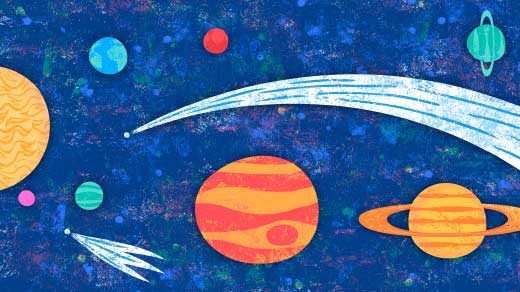Table of Contents
THE SOLAR SYSTEM
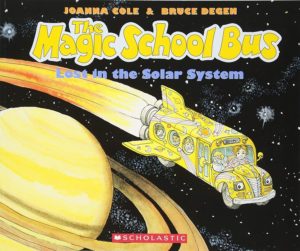
|
In Joanna Cole’s The Magic School Bus Lost in the Solar System (Scholastic, 1992), the planetarium is closed, so Miss Frizzle launches her class into space on board the magic school bus, where they take a tour of the solar system. Must of the information is delivered via hand-printed student reports. For ages 4-9. |
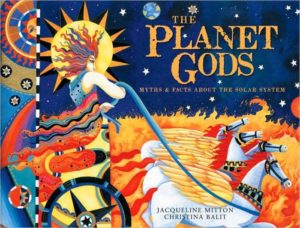
|
By Jacqueline Mitton – who has a Ph.D. in astrophysics – The Planet Gods (National Geographic Children’s Books, 2008) combines science with mythology and legends about the planets in our solar system. For ages 6-9. |
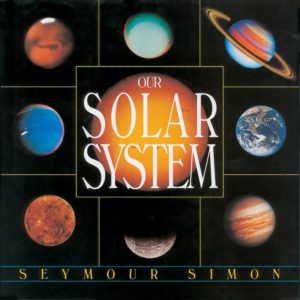
|
Seymour Simon’s Our Solar System (HarperCollins, 2007), illustrated with spectacular full-page color photographs, covers the sun, the planets and their moons, and asteroids, comets, and meteoroids. For ages 6-12.Also by Simon in the same format, see The Universe (2006), Galaxies (1991), Stars (2006), Destination: Space (2006), The Sun (1989), Earth (2003), The Moon (2003), Destination: Jupiter (2000), Destination: Mars (2016), and other individual books on the planets. |
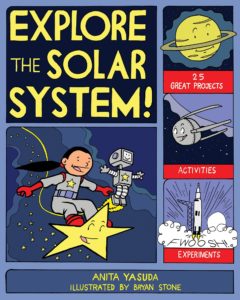 |
Anita Yasuda’s Explore the Solar System! (Nomad, 2009) includes background information, Words to Know and factoid boxes, and 25 hands-on activities. For ages 6-9. In the same format by Yasuda, also see Explore Comets and Asteroids! (Nomad, 2017). |
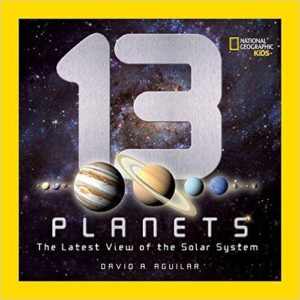
|
Astronomer David Aguilar’s 13 Planets: The Latest View of the Solar System (National Geographic Children’s Books, 2011) brings readers up to date on the solar system, including its latest inhabitants, Ceres and Eris. Illustrated with wonderful photos and diagrams. For ages 8-12. |
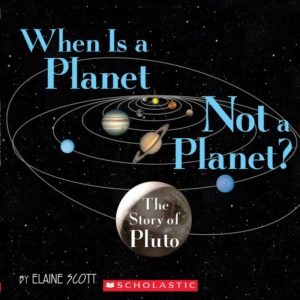 |
Elaine Scott’s When is a Planet Not a Planet? (Clarion Books, 2007) is the story of Pluto, downgraded in 2006 from “planet” to “dwarf planet.” For ages 9-12. |
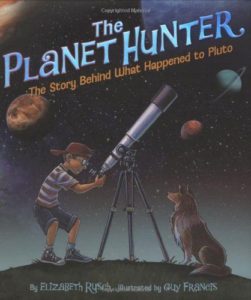 |
Also see Elizabeth Rusch’s The Planet Hunter: The Story Behind What Happened to Pluto (Cooper Square Publishing, 2007) for ages 4-8. |
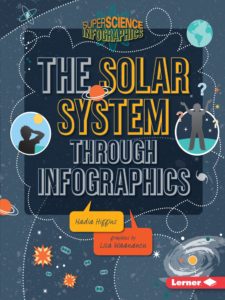 |
By Nadia Higgins, The Solar System Through Infographics (Lerner, 2013) provides fascinating data on the solar system using charts, maps, graphs, and illustrations. A great tie-in to math. For ages 8-11.
One of the Super Science Infographics series. |
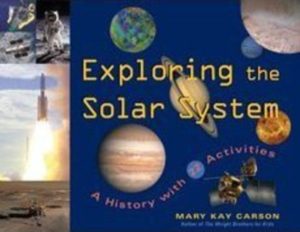
|
Exploring the Solar System by Mary Kay Carson (Chicago Review Press, 2006) is “A History with 22 Activities” charting space science from its ancient beginnings to the present day. Attractive diagrams demonstrate planetary motion, the inner workings of reflector, refractor, and compound telescopes, and the anatomy of a rocket; colored boxes hold capsule biographies of such famous space scientists as William Herschel, Robert Goddard, Edmond Halley, Edwin Hubble, and Yuri Gagarin. Projects include building a spectroscope (you’ll need an old CD), making craters in the kitchen, watching for satellites, taking a walk to Pluto, and making a map of the Moon. For ages 9 and up. |
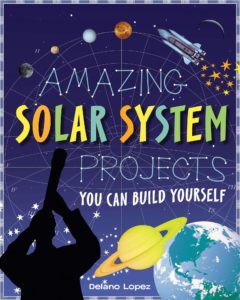 |
Delano Lopez’s Amazing Solar System Projects You Can Build Yourself (Nomad, 2008) is an introduction to the solar system and beyond, with many hands-on projects, among them building a model of an astronomical unit, an asteroid jigsaw puzzle, and a Newtonian telescope. For ages 9-12. |
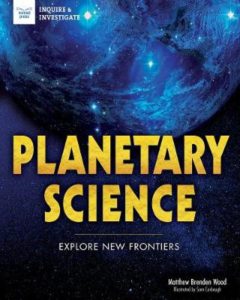 |
Matthew Brenden Wood’s Planetary Science (Nomad, 2017) is a creatively-designed survey of the solar system, with cartoons, fact boxes, primary sources, and activities intended to promote inquiry and investigation. For ages 12 and up. |
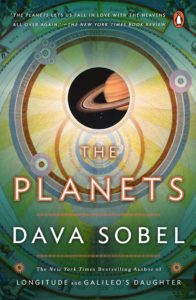 |
Dava Sobel’s The Planets (Penguin, 2006) covers the origins and oddities of the planets through popular culture, literature, art, music, biography, and history. For teens and adults. |
| Make a scale model of the solar system. Just fill in the diameter of your proposed sun and this program will fill in all the rest. | |
| Make a walk-through solar system. Prepare to count a lot of paces. |
SPACE EXPLORATION
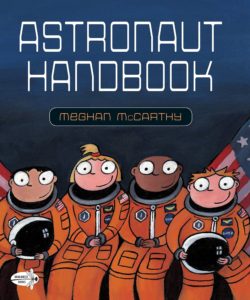 |
In Meghan McCarthy’s Astronaut Handbook (Knopf Books for Young Readers, 2008), four adorably pop-eyed kids head off for astronaut school. Readers learn what astronaut training is all about. Delightful for ages 4-8. |
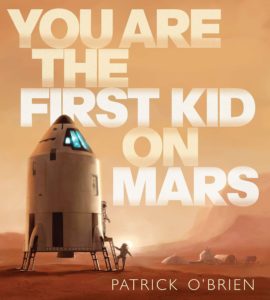
|
Patrick O’Brien’s You Are the First Kid on Mars (Putnam Juvenile, 2009) stars a little boy in an orange space suit traveling to Mars via space elevator, space station, and Nuclear Thermal Rocket (which last travels at a thrilling 75,000 miles per hour), and finally arriving at a Martian colony populated by scientists and engineers. The book is illustrated with wonderful photorealistic paintings, peppered with interesting facts, and written in the second person, which gives the text a feel of you-are-there immediacy. For ages 5-8. |
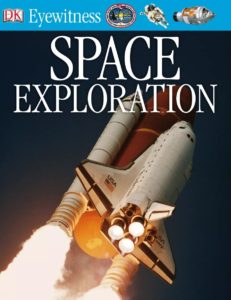
|
Carole Stott’s Space Exploration (Dorling Kindersley, 2009), an Eyewitness book, covers each topic in a double-page spread, creatively illustrated with photographs. Topics include “What is space?” “Rocket science,” “Man on the moon,” “Space stations,” and “Landers and discoverers.” For ages 8 and up. |
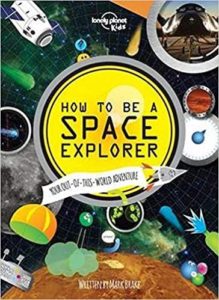 |
How to Be a Space Explorer (Lonely Planet Kids, 2014) has everything you need to know for exploring space, from a tour of the planets and their moons to space rocks, volcanoes, searching for alien life, deep space – and the return home. Included are stories of real-life exploration and over 300 photos. For ages 9-12. |
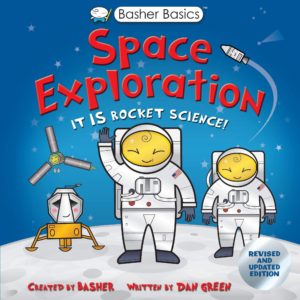 |
Simon Basher and Dan Green’s Space Exploration (Kingfisher, 2019) covers space exploration to infinity and beyond. A lot of information delivered in snarky first-person accounts. For ages 9 and up. |
 |
Tanya Lee Stone’s Almost Astronauts (Candlewick, 2009) is a fascinating (and infuriating) photo-essay about 13 women who almost became astronauts – and by doing so, opened the way to space for women. For ages 10 and up. |
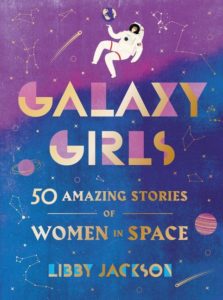 |
Libby Jackson’s (Harper Design, 2018) is a collection of 50 short biographies of women in space exploration from the 19th century to the present. For ages 10 and up. |
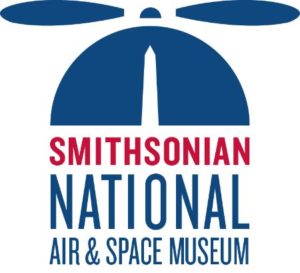 |
Best, of course, would be to take a trip to the Smithsonian National Air and Space Museum – but, lacking that, there’s a lot of good stuff online. For example, check out the exhibit of artifacts from the Apollo 11 mission. |
 |
Want to help search for extraterrestrial intelligence? Visit SETI@home and find out how. |
